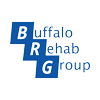Add This Running Cooldown to Your Routine
A good run deserves a great finish, and that’s exactly what a cooldown routine offers!
Taking just 10 minutes to transition from movement to rest can make a huge difference in how you feel afterward — and how you perform in the long run.
This quick cooldown will help your heart rate settle, reduce muscle tightness, and set you up for a smooth recovery.
Ease into Recovery with a 3-5 Minute Jog or Walk
As tempting as it is to stop right at the finish line, your body benefits from a gradual slowdown.
A three to five-minute light jog or walk helps your heart rate come down slowly, letting blood flow more evenly through your muscles. This “active recovery” phase flushes out some of the lactic acid that builds up during intense movement, reducing soreness and stiffness.
Think of this as a bridge from your run to your rest.
Reset with Box Breathing
Once you’ve slowed down, take a moment to focus on your breathing.
Box breathing is a simple technique that helps your heart rate settle and calms your mind after the effort of your run. Here’s the pattern:
- Inhale slowly for 4 counts.
- Hold your breath for 4 counts.
- Exhale slowly for 4 counts.
- Hold at the end of your exhale for 4 counts. Repeat this cycle for about a minute, focusing on each breath. Box breathing signals your body to shift into recovery mode, giving you a sense of calm and control that benefits both your mind and your muscles.
Static Stretching: Loosen Up Tight Muscles
Now that your heart rate is down, it’s time to stretch the muscles that worked the hardest during your run.
These static stretches will help release tension, increase flexibility, and improve circulation. Try to hold each stretch for 20-30 seconds, then switch sides.
Here’s a breakdown of each move:
- Hamstring Stretch: Stretching your hamstrings can help prevent stiffness in the back of your legs. Reach for your toes or use a stable surface for balance, keeping a slight bend in your knee if you need to.
- Quad Stretch: Your quads power each stride, so they need a little TLC. Stand tall, bend one knee, and gently pull your heel toward your glutes, holding onto your ankle. Keep your knees close together and engage your core for a balanced stretch.
- Side Lunge: This stretch targets your inner thighs, which often tighten up after running. Step out to the side, bend one knee, and keep the other leg straight as you shift your weight to feel a gentle stretch along your inner thigh.
- Front Lunge: Help loosen up those hard-working hip flexors with a front lunge stretch. Step forward, bending your front knee and keeping your back leg straight to feel a stretch in the front of your hip and thigh. This one’s crucial for maintaining stride length and mobility.
- Calf Stretch (Heel Flat on the Ground): Don’t forget your calves! Find a wall or stable surface, step one foot back, and press your heel down to the floor. This stretch targets the calves, which absorb a lot of impact during your run, and can reduce the risk of tightness or cramping.
Why This Routine Works
How you end your run matters just as much as how you start.
This 10-minute cooldown is designed to help your body wind down naturally, reducing muscle tension, improving flexibility, and minimizing the risk of injury over time.
So, next time you’re ready to hang up your running shoes, give yourself these few extra minutes to unwind. A well-rounded cooldown can be the key to feeling better, running stronger, and staying injury-free!
Are you a runner struggling with an injury?
Unlike other medical providers, Buffalo Rehab Group understands your need to run. Get back to running pain- and injury-free with help from a Physical Therapist who loves running, too!
Click below to learn more about our specialized Physical Therapy services for runners:
